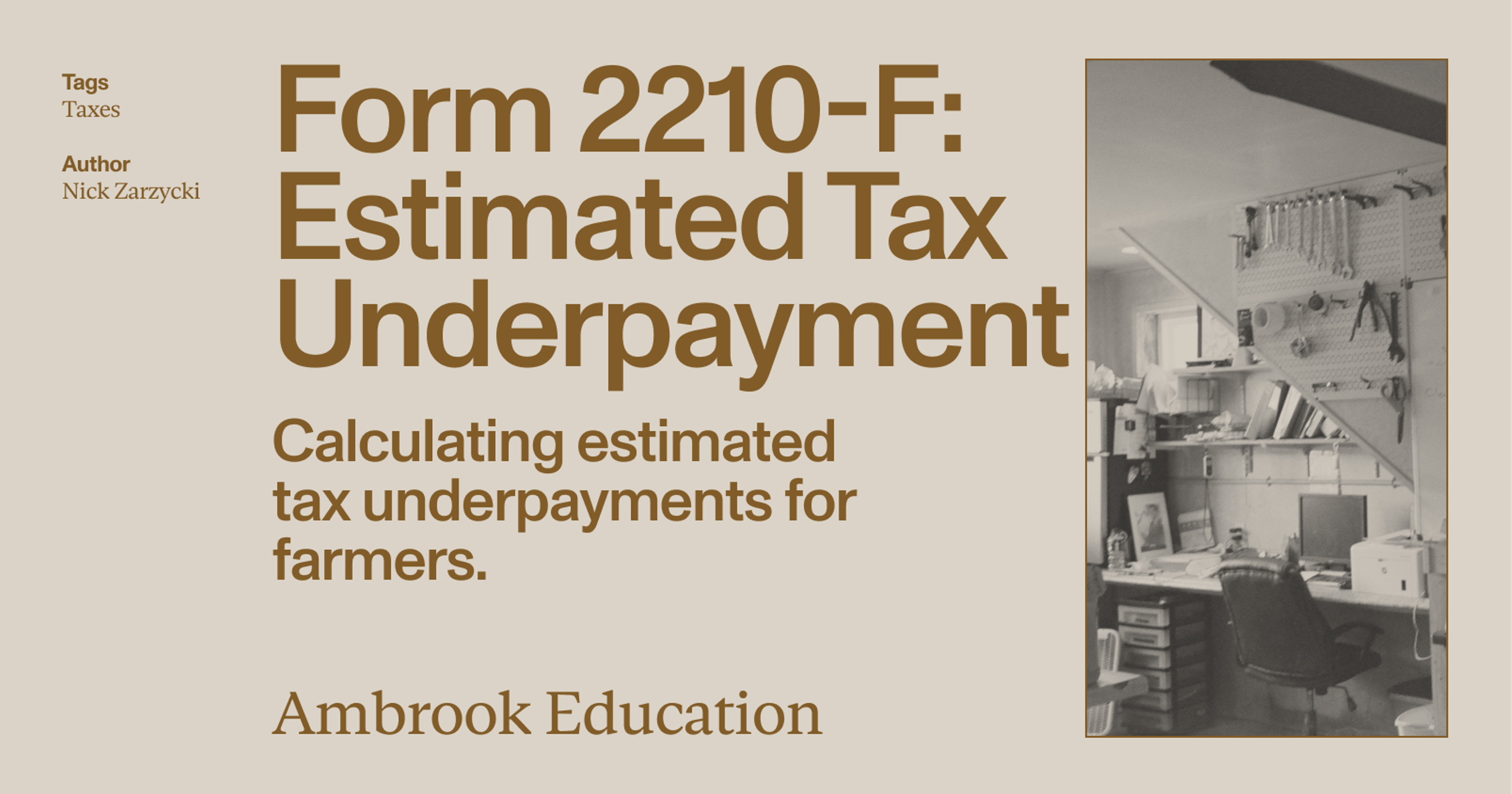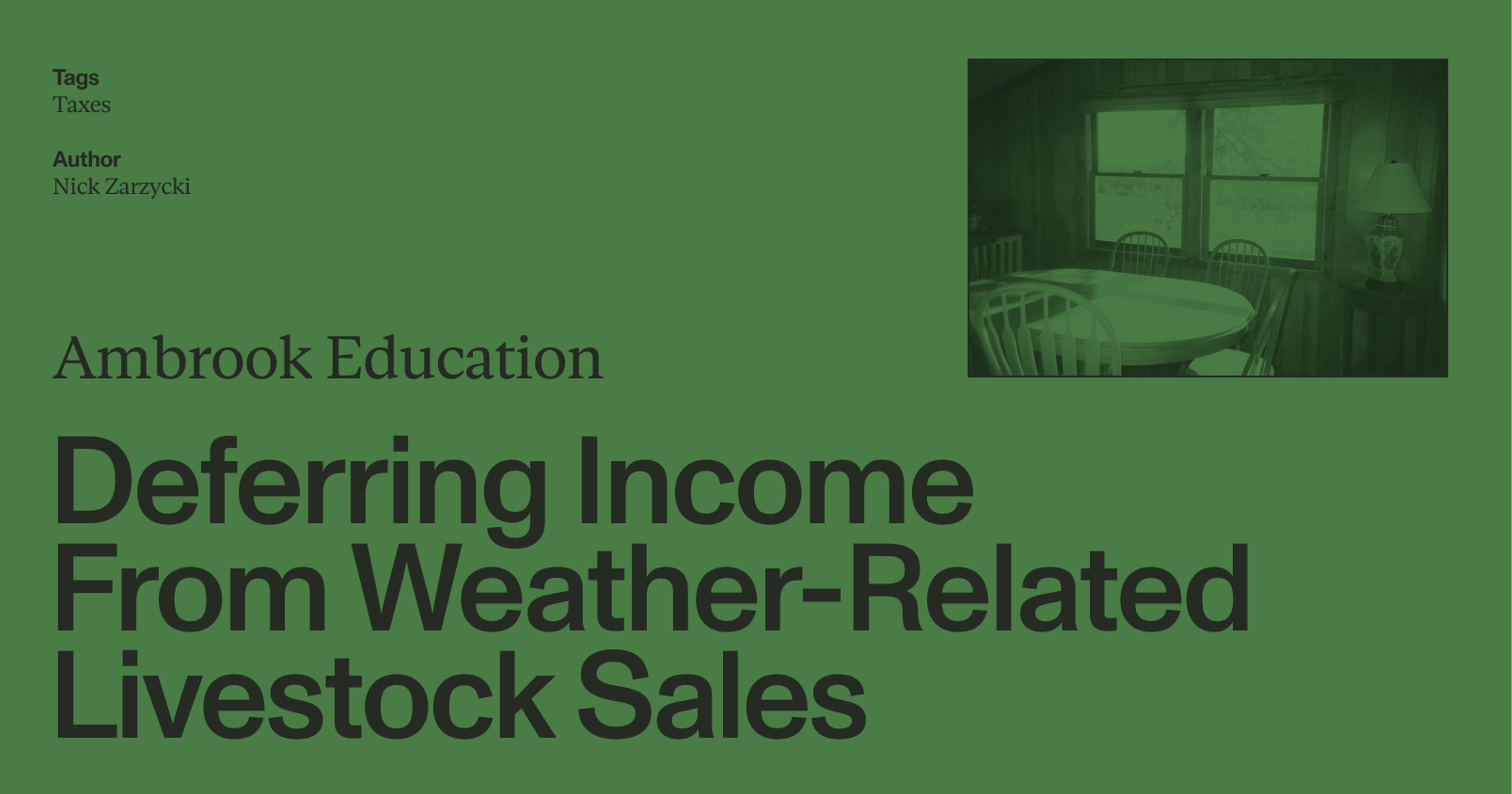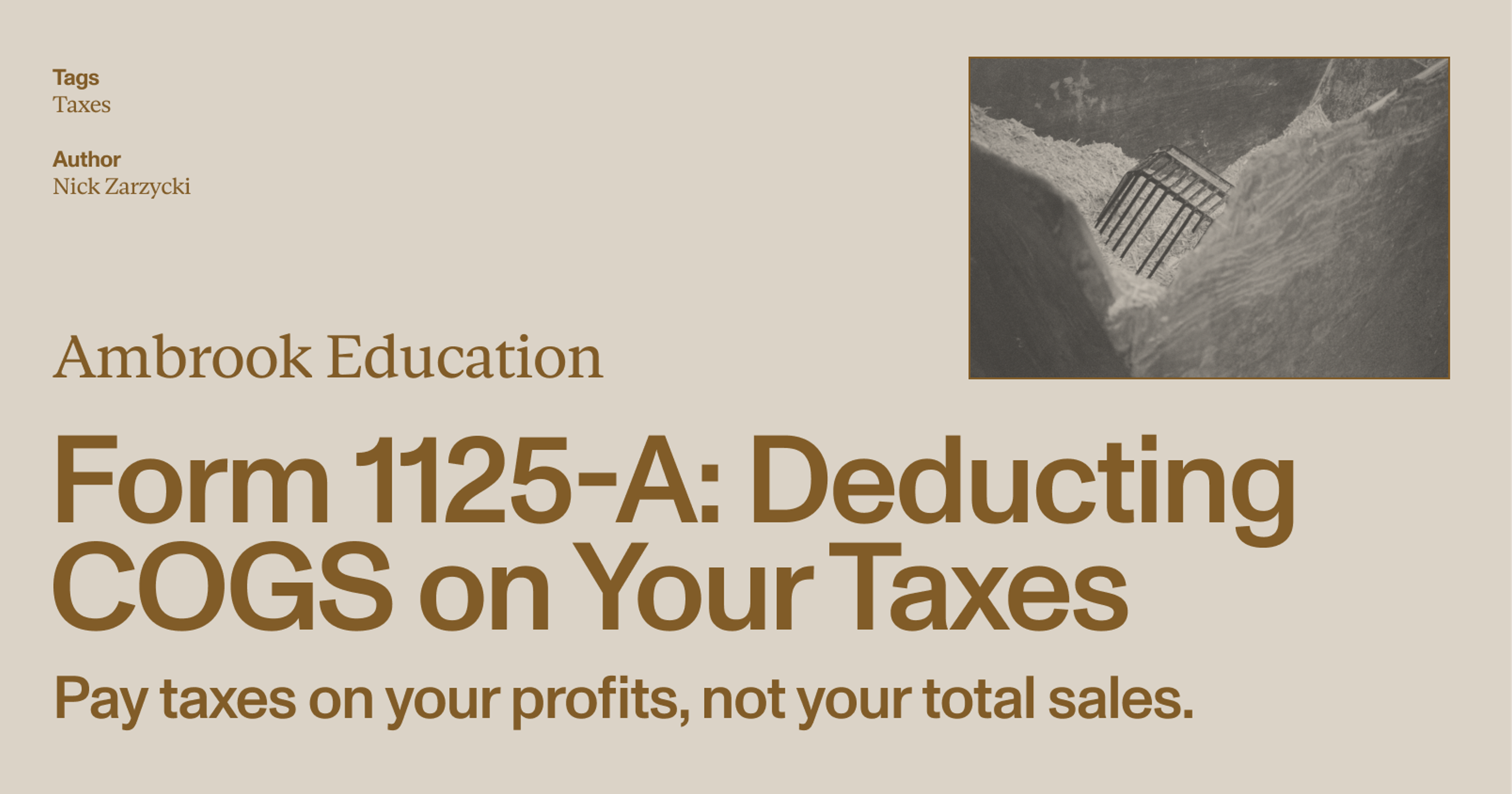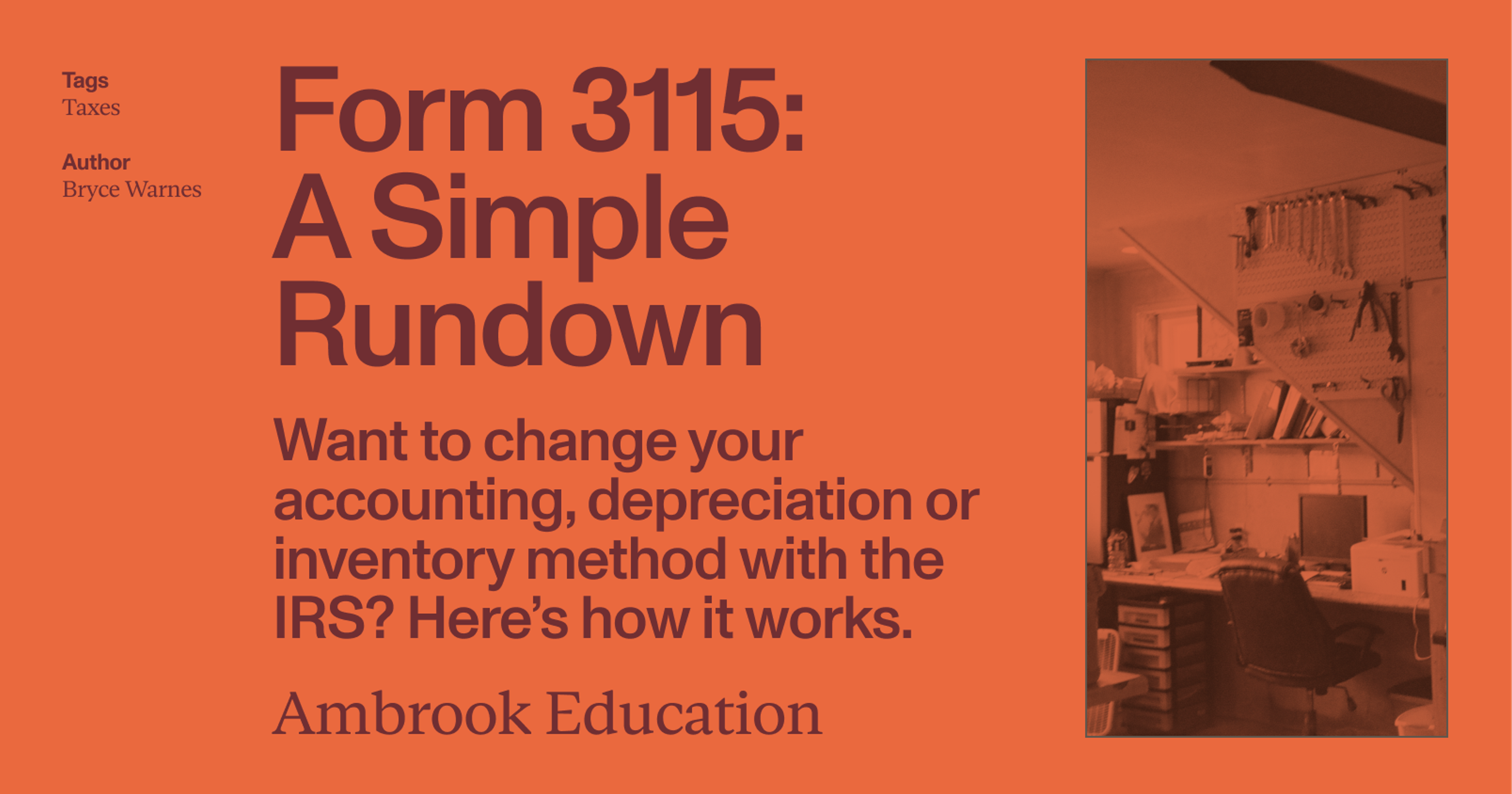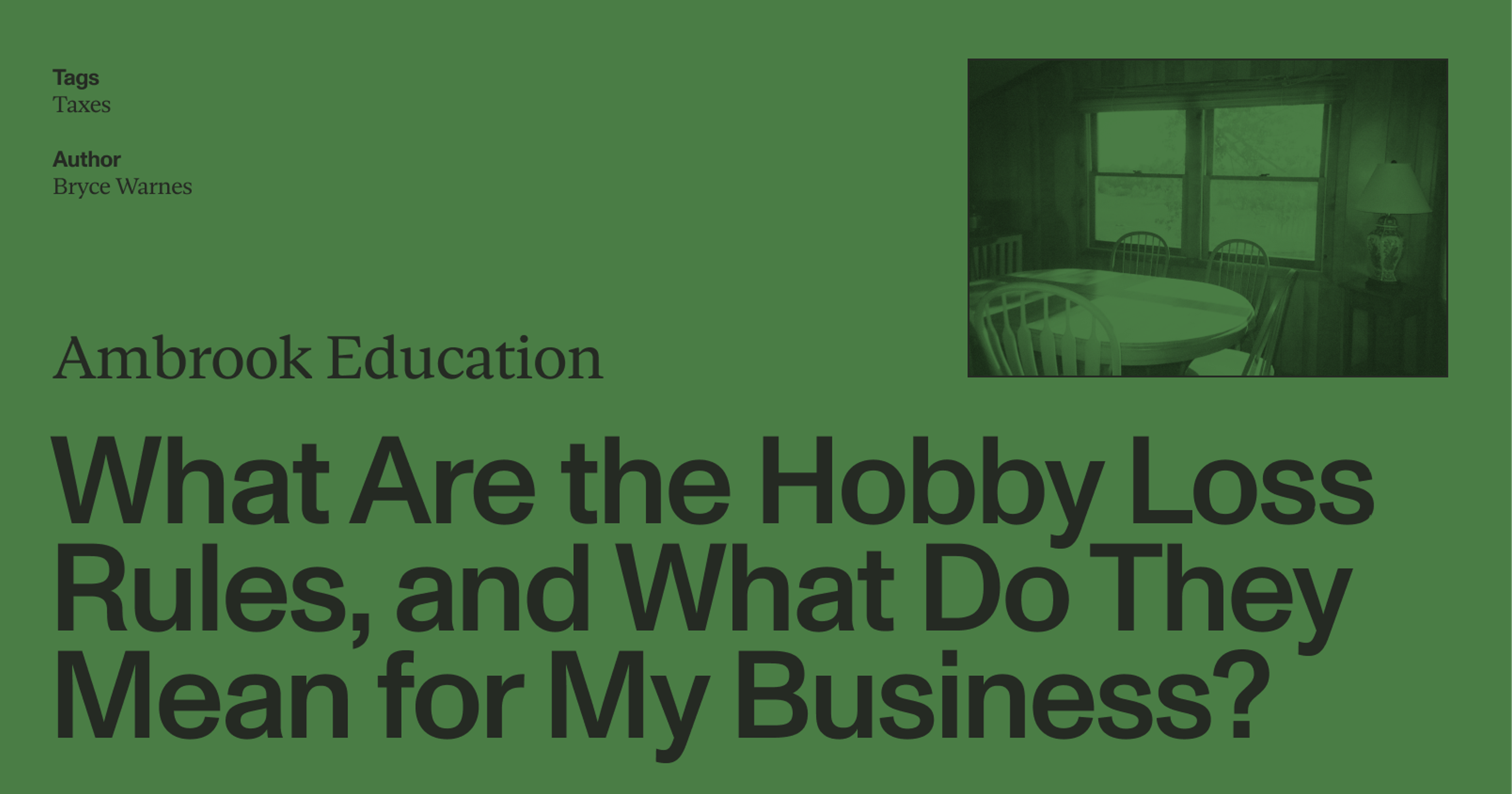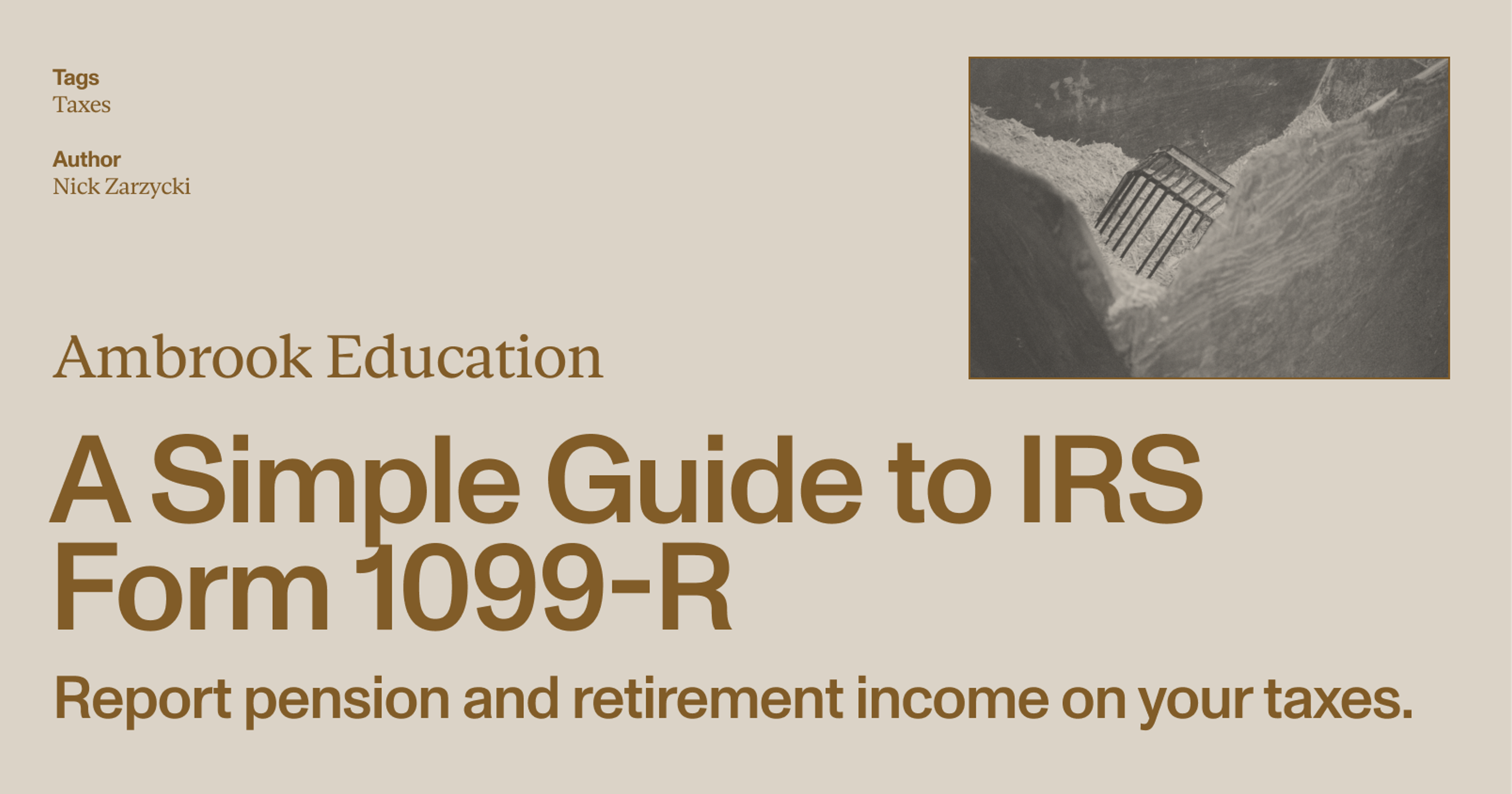If you’re a farmer and suspect you might have underpaid your estimated taxes, you can use Form 2210-F to see if you owe a penalty. Here’s how it works.
Like most other taxpayers, farmers use Form 1040–ES to figure and pay their estimated tax payments for self-employment income. If you’re a farmer and suspect you might have underpaid your estimated taxes, you can use IRS Form 2210-F to figure any penalty you owe.
You generally don’t have to file 2210-F with the IRS–they’ll already know if you owe a penalty–however you might have to file if you ask for your penalty to be waived or if you’re filing jointly.
What is Form 2210-F?
If more than two thirds of your income over the last two tax years came from farming and you suspect you might have underpaid your estimated tax, you can use Form 2210-F to calculate whether you’ve actually underpaid and owe a penalty.
Farmers have their own separate form for calculating underpayment because they have special rules for estimated tax payments.
How do estimated tax payments for farmers work?
Taxpayers usually make four estimated tax payments throughout the year, however farmers have two other options:
They may make a single estimated tax payment covering at least two thirds of the tax due by the 15th of the month following the close of their tax year (January 15 if they’re calendar year)
They can skip all payments by filing their tax return and paying 100% of the tax due on the 1st day of the third month following the close of their tax year (March 1 if they’re calendar year).
To qualify, two thirds of the taxpayer’s gross income must come from farming, which includes farming income reported on Schedule F (Form 1040), farm rental income reported on line 7 of Form 4835, and gains from the sale of livestock reported on Form 4797.
Do I have to file Form 2210-F?
Taxpayers generally don’t have to file 2210-F: the IRS will already know if you underpay your estimated tax and owe a penalty. However, you must file if one or both of the boxes in Part I of Form 2210-F apply to you (see below).
Form 2210-F: line-by-line instructions
Part I: Reasons for Filing
Here you’ll check one of two boxes indicating to the IRS why you’re attaching and filing Form 2210-F with your tax return. Taxpayers generally have to file 2210-F for one of two reasons:
You request that the IRS waive all or part of the underpayment penalty, either because you’re aged 62 or older and retired in the previous tax year, or because the underpayment was caused by a disaster or other unusual circumstances, like a serious illness or death of an immediate family member.
You filed or are filing a joint return for either of the previous two tax years, but not for both years, and the amount on line 10 of Form 2210-F is smaller than line 7.
Part II: Figure Your Underpayment
Line 1: tax after credits
Here you’ll enter the after-credit tax for your current tax year, which you can find on Line 22 on Form 1040, Form 1040-SR, or Form 1040-NR, or on line 3 of Form 1041, Schedule G.
Line 2: other taxes
Here you’ll enter all additional taxes from your current tax year. If you’re filing Form 1040, Form 1040-SR, or Form 1040-NR, you can find these on Schedule 2 on the following lines:
Line 4: Self-employment tax (calculated on Schedule SE)
Line 8: Additional tax on IRAs (calculated on Form 5329)
Line 9: Household employment taxes (calculated on Schedule H)
Line 10: Repayment of first-time homebuyer credit (Form 5405)
Line 11: Additional medicare tax (Form 8959)
Line 12: Net investment income tax (Form 8960)
Line 14: Interest on tax due on installment income from the sale of certain residential lots and timeshares
Line 15: Interest on the deferred tax on gain from certain installment sales with a sales price over $150,000
Line 16: Recapture of low-income housing credit (Form 8611)
Line 17a: Recapture credits
Line 17c: Additional tax on HSA distributions (Form 8889)
Line 17d: Additional tax on an HSA because you didn’t remain an eligible individual (Form 8889)
Line 17e: Additional tax on Archer MSA distributions (Form 8853)
Line 17f: Additional tax on Medicare Advantage MSA distributions (Form 8853)
Line 17g: Recapture of a charitable contribution deduction related to a fractional interest in tangible personal property
Line 17h: Income you received from a nonqualified deferred compensation plan that fails to meet the requirements of section 409A
Line 17i: Compensation you received from a nonqualified deferred compensation plan described in section 457A
Line 17j: Section 72(m)(5) excess benefits tax
Line 17l: Tax on accumulation distribution of trusts
Line 17z: Other taxes
Line 19: Recapture related to an elective payment election (Form 4255)
If you’re a household employer, include your household employment taxes on line 2 unless both of the following are true:
You didn’t have federal income tax withheld from your income.
You wouldn’t be required to make estimated tax payments, even if the household employment taxes were not included.
Line 3
Add together lines 1 and 2. If the resulting amount is less than $1,000, you don’t owe a penalty and don’t need to file Form 2210-F.
Line 4: credits and payments claimed
Here you’ll enter any credits and payments you claimed on your tax return, including:
Earned income credit
Additional child tax credit
Refundable part of the American opportunity credit (Form 8863, Line 8)
Premium tax credit (Form 8962)
Credit for federal tax paid on fuels
Qualified sick and family leave credits (Schedule H and Form 7202)
Refundable child and dependent expenses credit (Form 2441)
Health coverage tax credit
Credit determined under Internal Revenue Code Section 1341
Line 6
Subtract your total credits (line 4) from the amount you calculated on line 3. If the result is less than $1,000, you don’t owe a penalty and don’t need to file Form 2210-F..
Line 7
Multiply the amount you calculated on line 6 by 0.667. You’ll compare this amount to your previous year tax amount (line 10) to determine whether to check box B in Part I.
Line 8: withholding taxes
Here you’ll enter any withholding taxes shown on the following forms:
Schedule 3 (Form 1040), line 11, if you filed Form 1040, Form 1040-SR, or Form 1040-NR
Form 1040 or 1040-SR, line 25d
Form 1040-NR, lines 25d, 25e, 25f, and 25g
Form 1041, Schedule G, line 14
Line 9
Subtract withholding taxes (line 8) from the amount on line 6. If the result is less than $1,000, you don’t owe a penalty and don’t need to file Form 2210-F.
Line 10: previous year tax
Here you’ll repeat the process you went through for lines 1-3 for the tax year previous to the one you’re filing for now. If you’re filing your 2024 taxes, for example, you’ll enter your after-credit taxes for 2023.
Line 11
Enter the smaller of line 7 or line 10: this is your required annual payment. If line 8 is equal to or more than line 11, you don’t owe a penalty and don’t need to file Form 2210-F.
Line 12: estimated tax payments
Enter the estimated tax payments you made by January 15, 2025, and any federal income tax and excess social security or tier 1 railroad retirement tax withheld during 2024.
Line 13: total underpayment amount
Subtract your estimated tax payments (line 12) from your required annual payment (line 11) to calculate your total underpayment. If the result is zero or less, you don’t owe a penalty.
Part III: Figure the Penalty
Line 14
Enter the date that you paid your underpayment (line 13) or April 15th, whichever is earlier.
Line 15
Calculate the number of days between the date you entered on line 14 and January 15th.
Line 16
Divide the number of days you calculated on line 15 by 365. Multiply the resulting amount by the underpayment you calculated on line 13, then multiply that number by 0.07:
Line 13 x (Line 15/365) x 0.07 = Total Penalty
The resulting amount is your total underpayment penalty. Enter this amount on line 16, on line 38 of Form 1040, Form 1040-SR, or Form 1040-NR, or line 27 of Form 1041.
Never miss another tax deadline again with Ambrook
Ambrook’s category tags correspond directly to each line on Schedule F, making it easy to compare your tax return to your records and saving you hours of work during tax season.
With time-saving bookkeeping automation features, automatically-generated financial reports, streamlined bill pay and invoicing, and other powerful accounting and financial management tools, Ambrook doesn’t just make filing your taxes easy: it takes the guesswork out of running your business. Want to learn more? Schedule a demo today.
Want to learn more about Ambrook?
This resource is provided for general informational purposes only. It does not constitute professional tax, legal, or accounting advice. The information may not apply to your specific situation. Please consult with a qualified tax professional regarding your individual circumstances before making any tax-related decisions.

